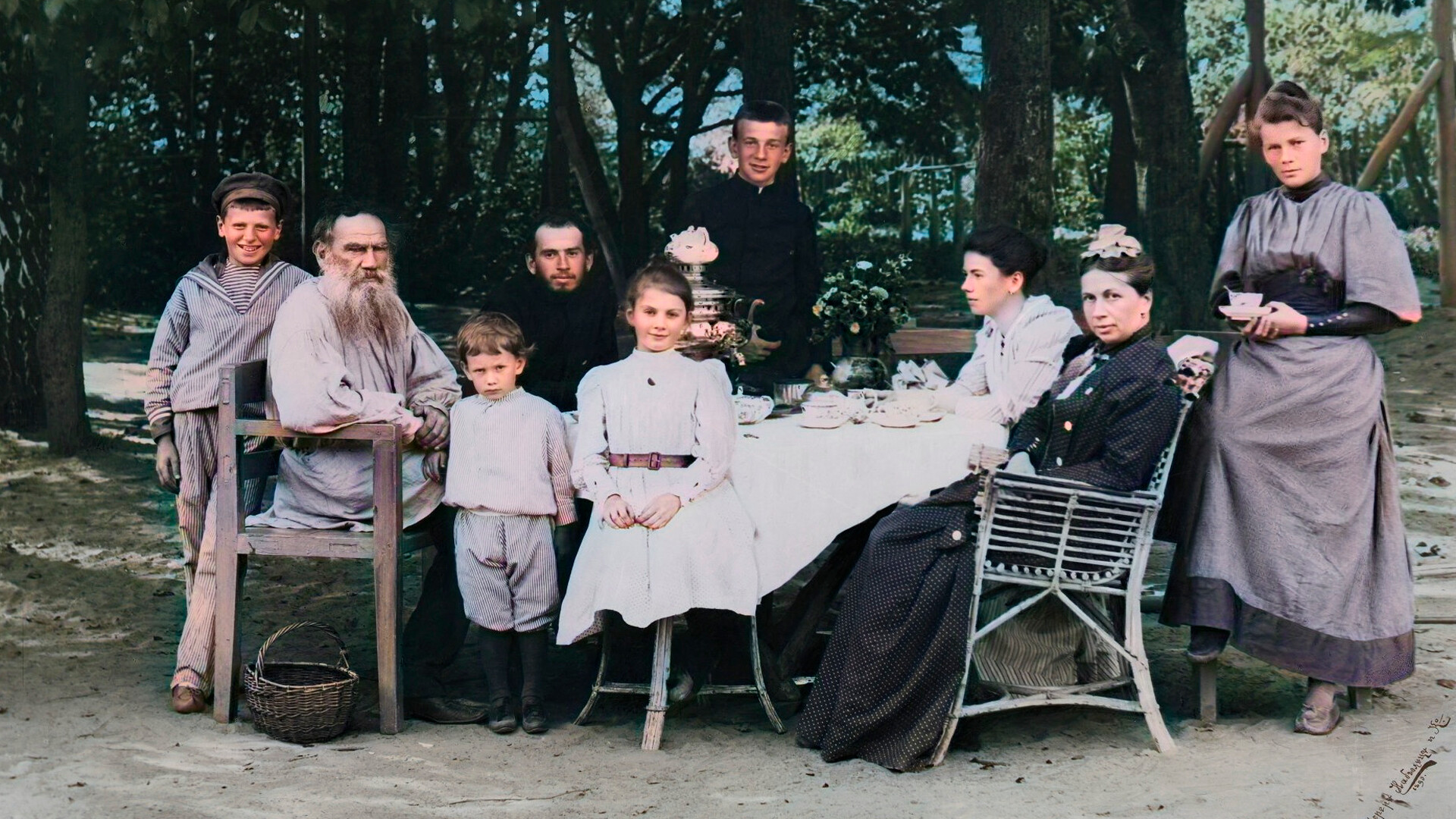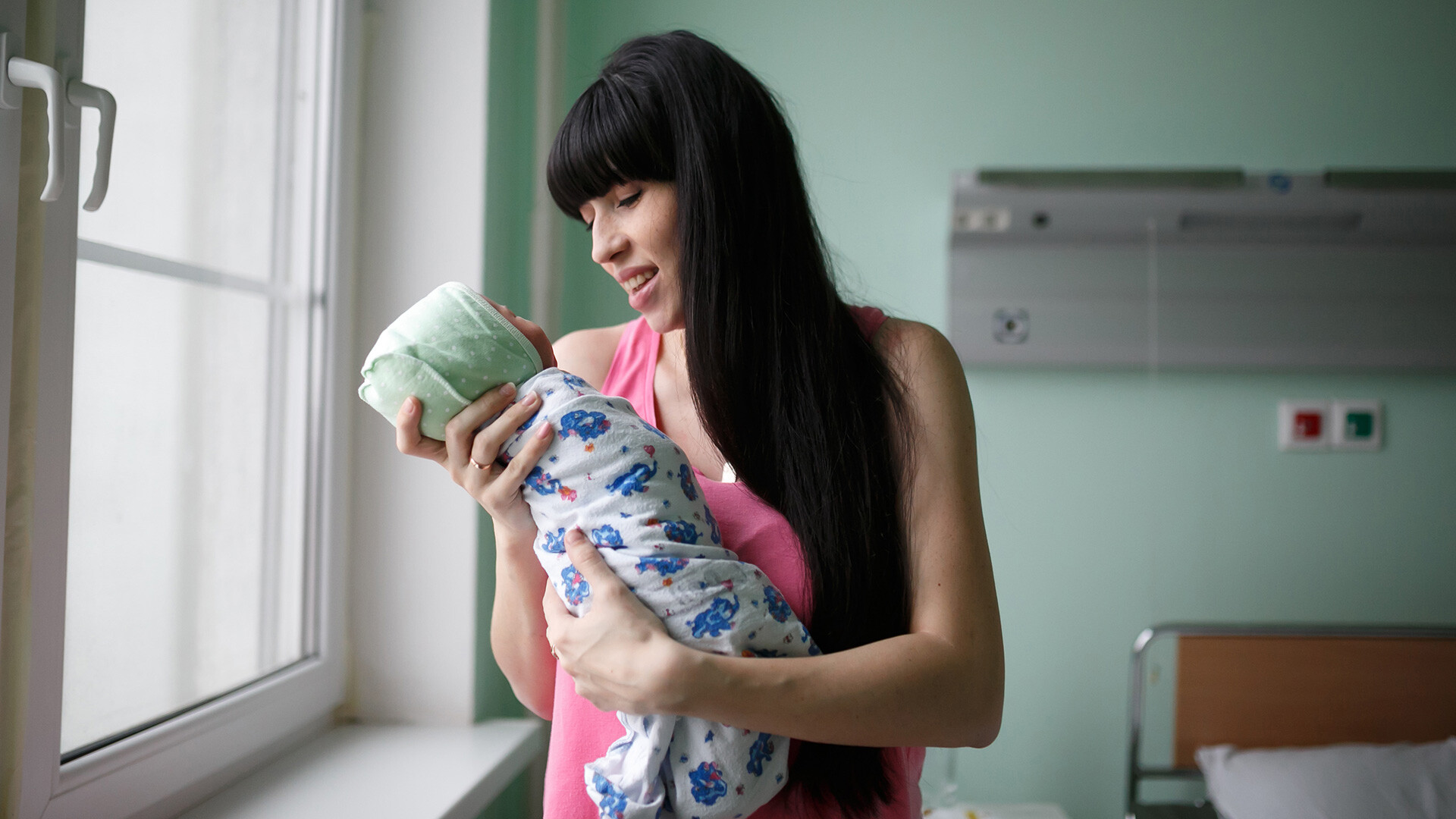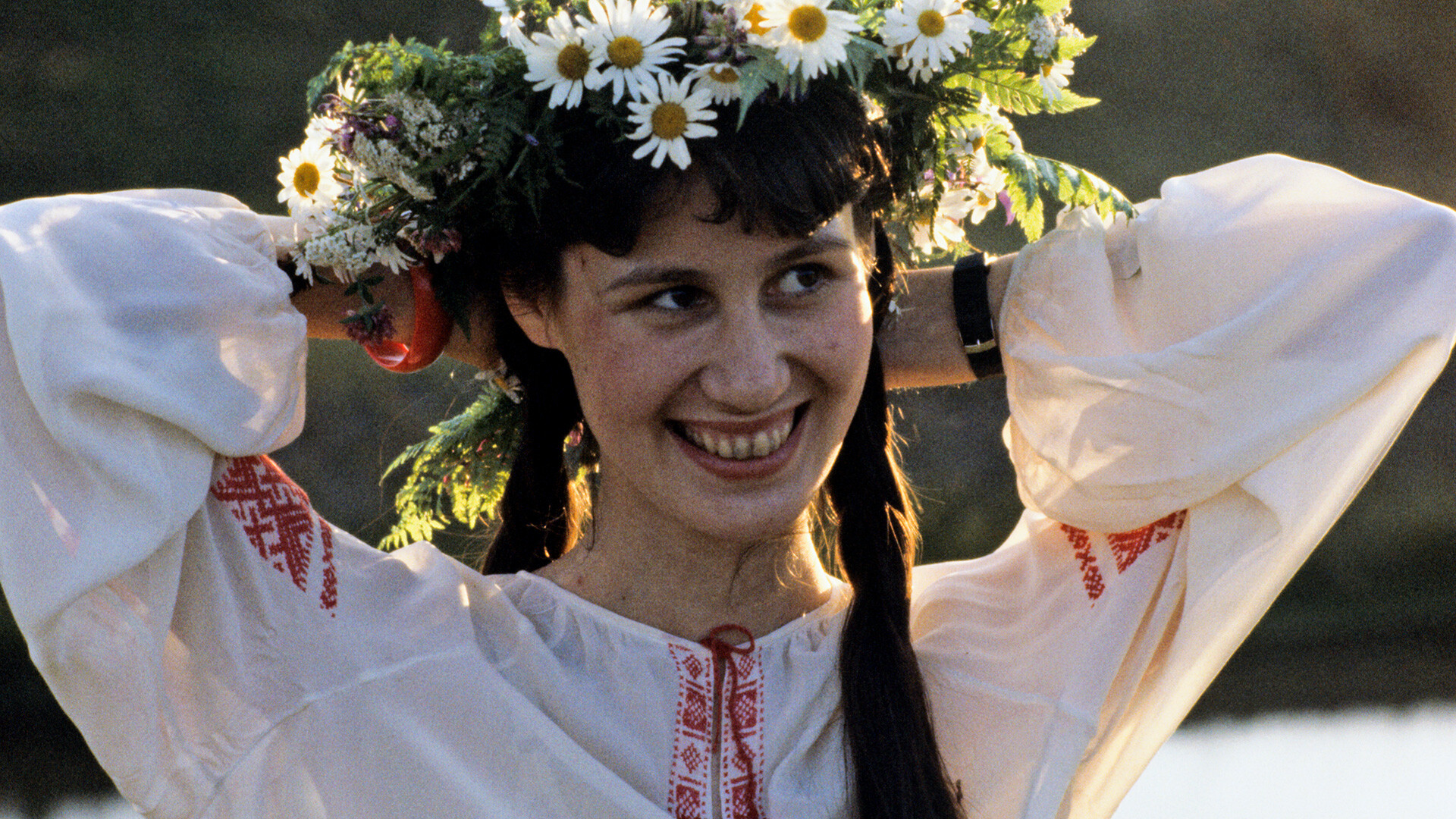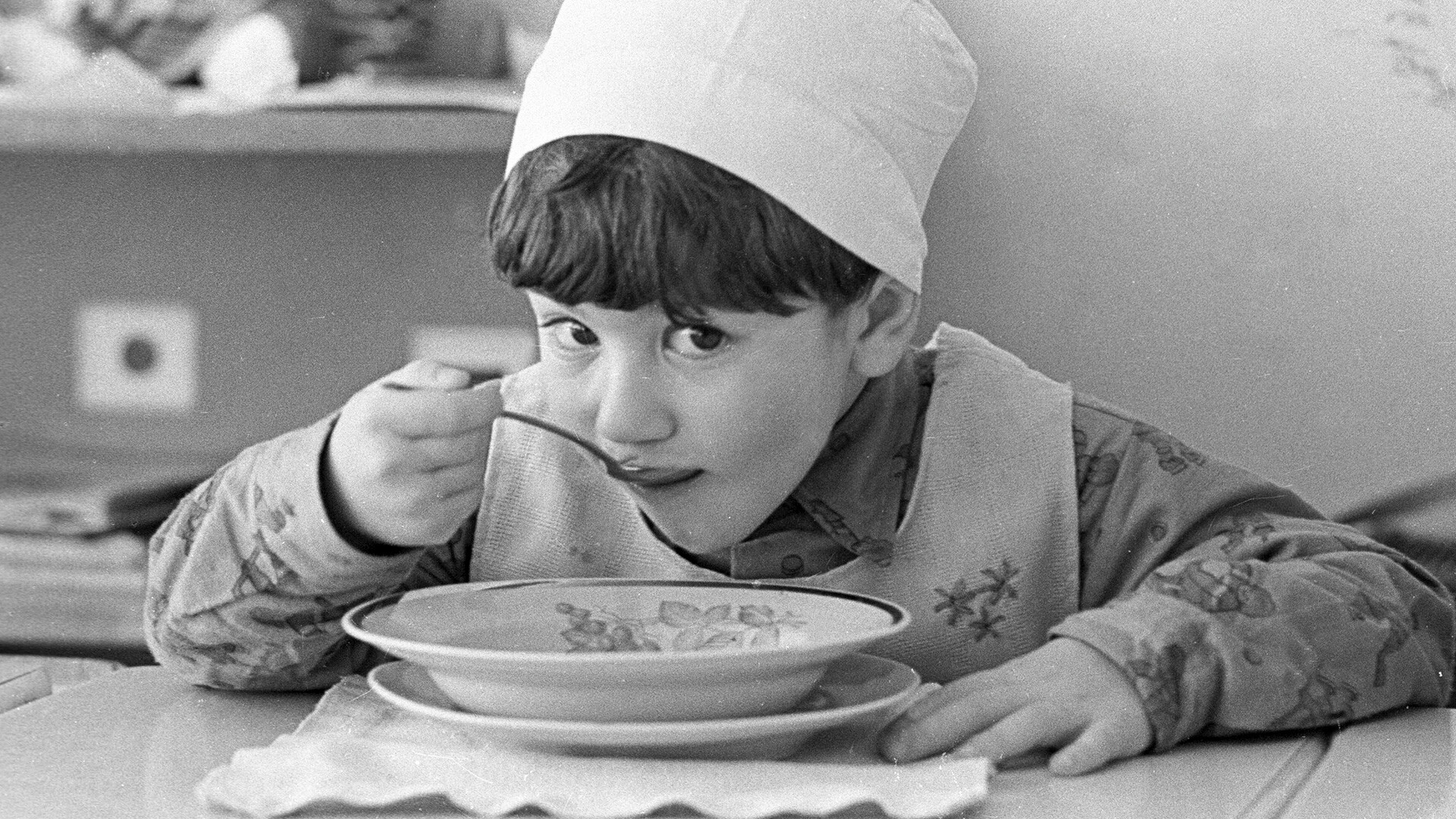
What is a ‘milk kitchen’ & how did it appear in Russia?
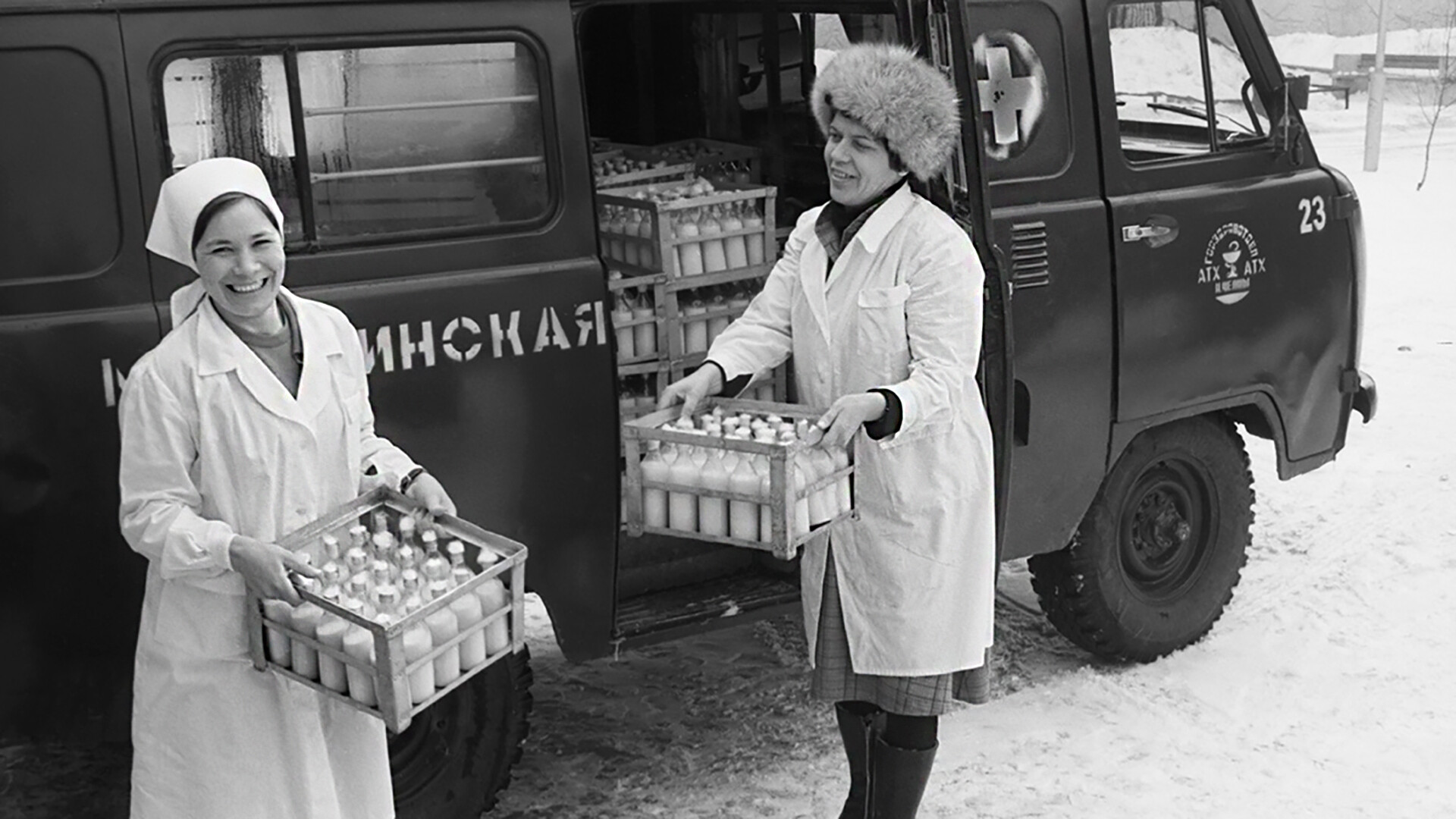
Russian legislation has no such term as ‘milk kitchen’, but there is a guaranteed food supply program for pregnant women, breastfeeding mothers and children up to three years of age. Initially, ‘milk kitchens’ emerged back at the beginning of the 20th century in St. Petersburg, but it was in Soviet years when literally every village had one. Today, Russia no longer has such a centralized system and not all places have retained ‘milk kitchens’. Nonetheless, in many regions of the country, one can still receive free dairy grocery packages or monetary compensation.
‘A drop of milk’
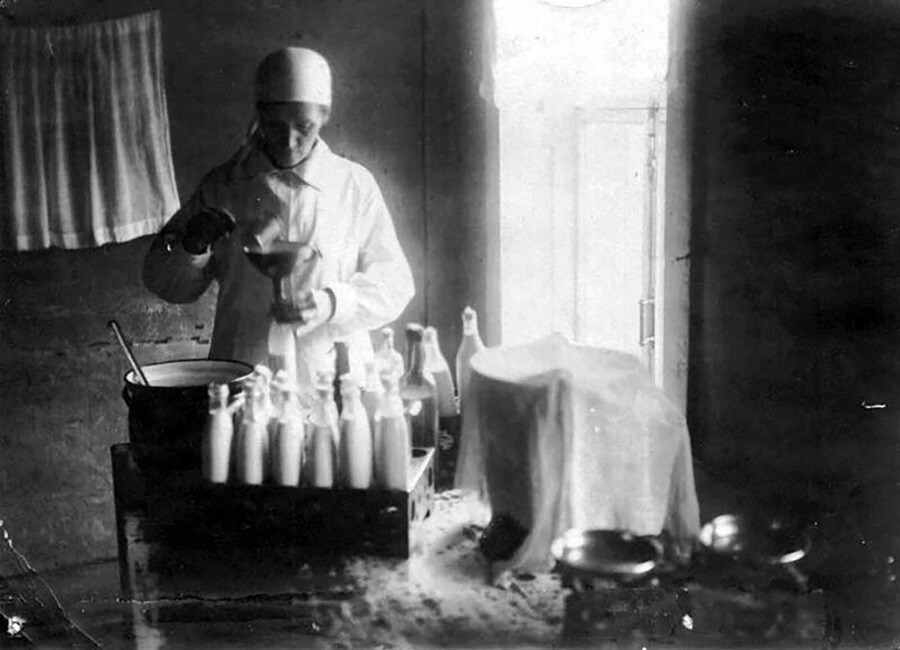 Milk kitchen, 1937.
Milk kitchen, 1937.
The first ‘milk kitchen’ was opened in 1901 in a city orphanage in St. Petersburg. Not just orphans ended up there, but also illegitimate children, as well as babies whose mothers had died (they could be taken back into the remaining family after they reached the age of 12 months). To decrease the incredibly high mortality rate among babies at the time, especially among premature ones, supplementary feeding was arranged in the orphanage.
At first, they gave babies expressed wet nurse milk, then, gradually, they began feeding them with regular cow milk.
A little later, in 1904, a baby milk preparation station was opened, from where the goods were then distributed among pharmacies. Mothers could receive them with a doctor’s referral. People dubbed this system ‘a drop of milk’.
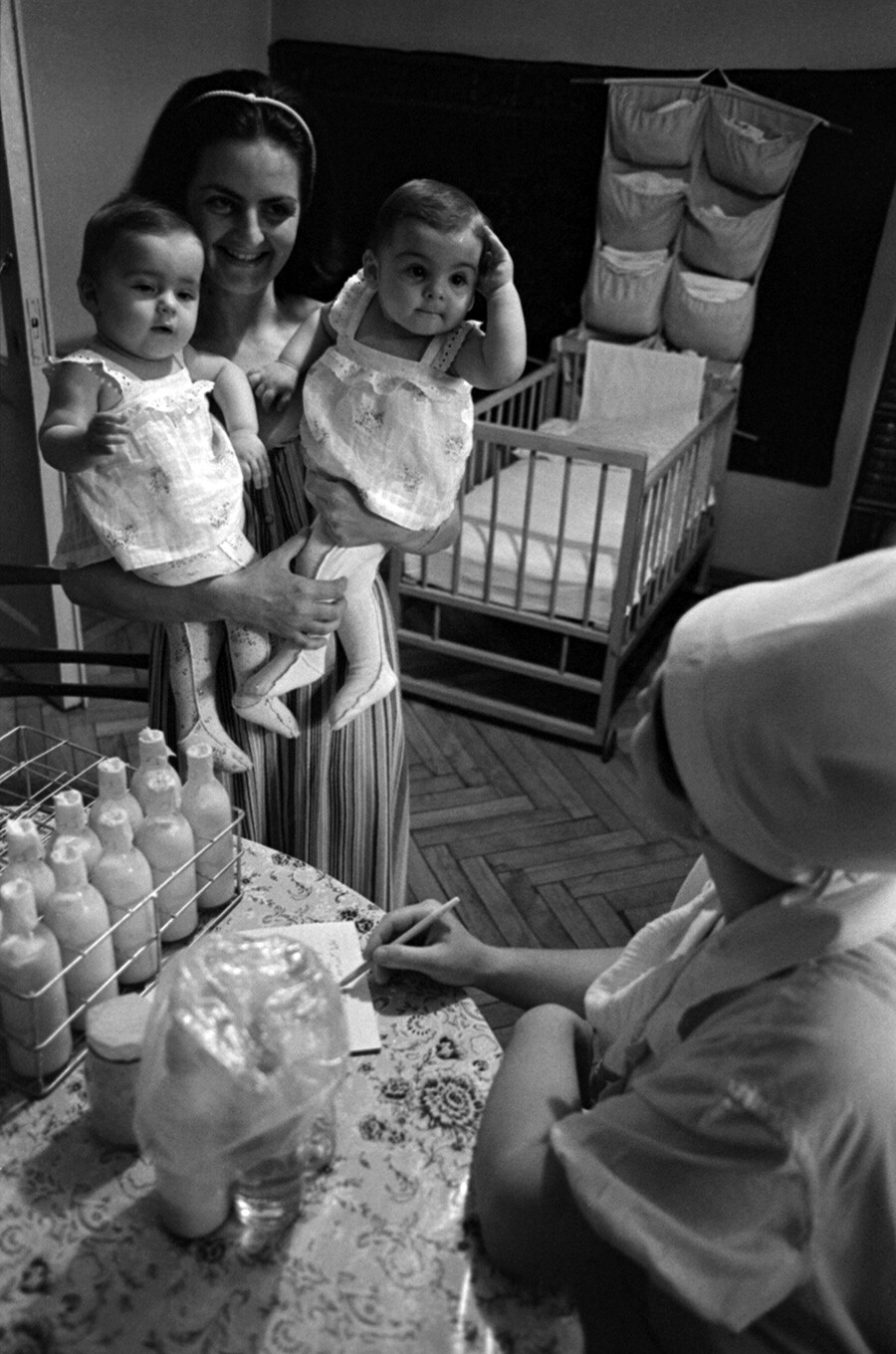
In 1912, the Moscow Orphanage also opened a ‘milk room’. Every day, more than 2,000 jars of milk were prepared there; in 1916, they even prepared as many as 4,000. In total, the country had 40 operating ‘milk rooms’, which, of course, was far too few.
After the 1917 Bolshevik Revolution, the practice of supplementary milk feeding was actively developed on the state level.
The system of milk distribution points
During the early Soviet years, the state struggled against malnutrition in both adults and children, especially babies. ‘Milk kitchens’ were now being set up in orphanages (the country had a lot of orphans after the revolution) and also hospitals.
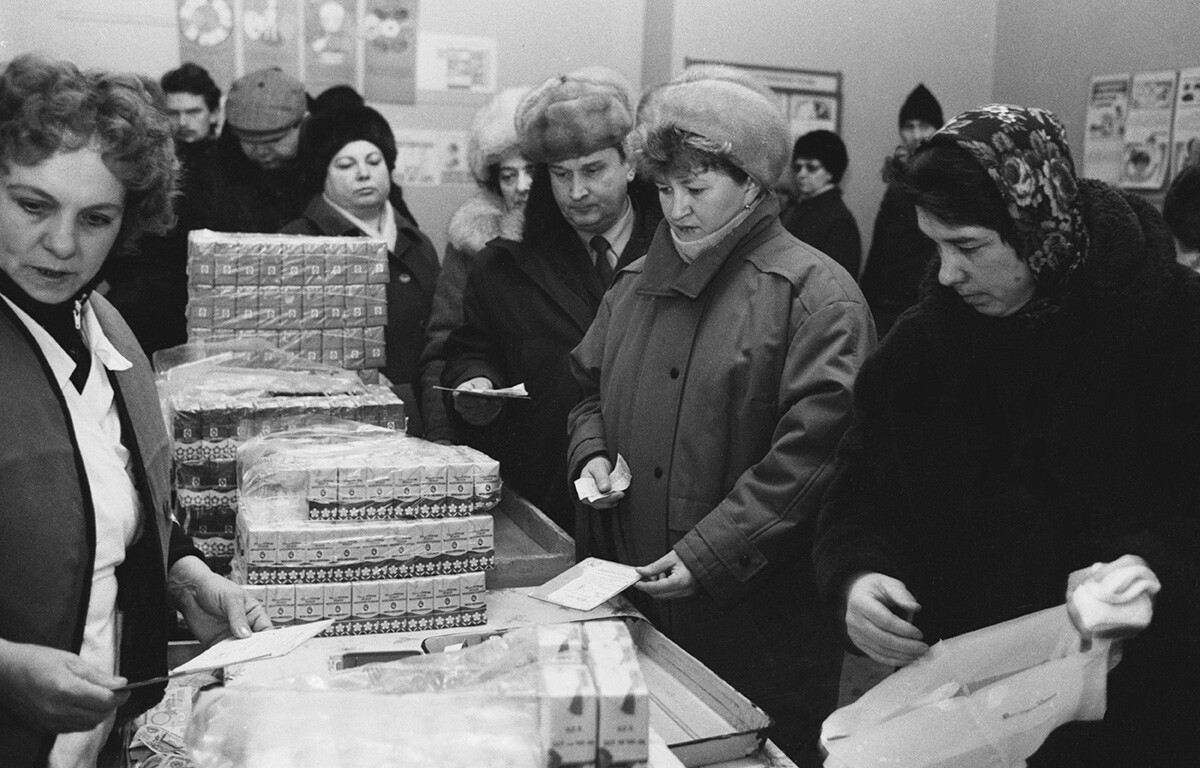 Moscow. March 1, 1992. The queue for baby food at the milk kitchen.
Moscow. March 1, 1992. The queue for baby food at the milk kitchen.
In them, children received milk, kefir and cottage cheese from the state.
During the Siege of Leningrad in World War II, children, regardless of their age, were attached to a ‘milk kitchen’ in a health center, where they could receive milk, porridge and baby formula.
Right after World War II, ‘milk kitchens’ began to open across the entire Soviet Union. In 1966, the Ministry of Health of the USSR approved the creation of ‘milk kitchens’ for infants. Initially, only families with multiple children were eligible for free food, but, later, it became available to all children up to 12 months old.
The main feature of these facilities was that everything was prepared there and distributed through referrals that one had to obtain every month strictly on predetermined days and stand in a waiting line with others for the goods. The ‘kitchen’ operated only from 7 to 11 in the morning. Groceries brought directly from ‘milk factories’ were distributed there. Their shelf life was very short, only one or two days. That’s because it was prohibited to use preservatives in baby dairy products. Milk and kefir, meanwhile, were distributed in glass bottles, which had to be returned the next day.
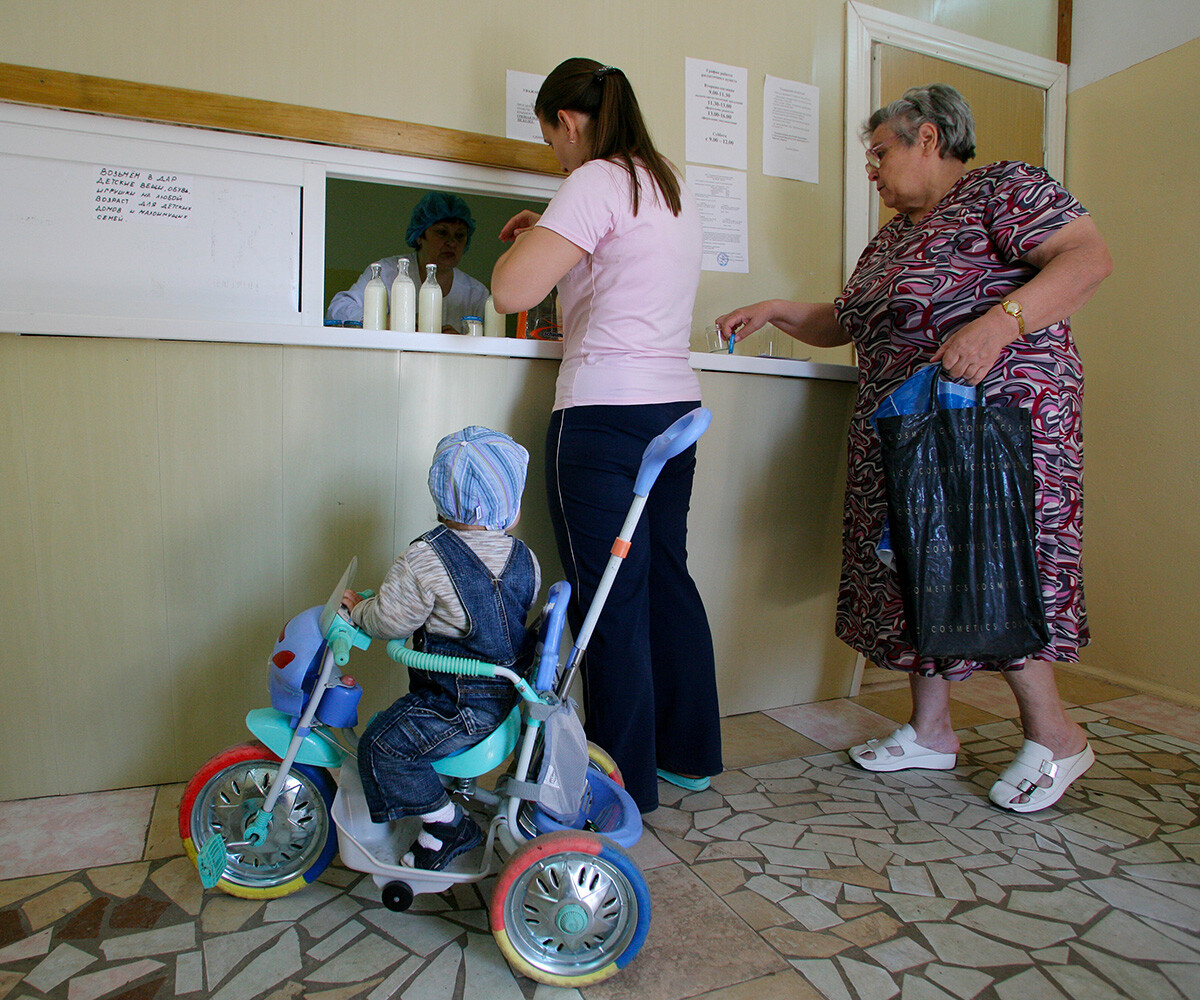 A mother with a baby getting milk mix at a milk kitchen, Ryazan.
A mother with a baby getting milk mix at a milk kitchen, Ryazan.
The products of ‘milk kitchens’ were not for general sale; one could only receive them with a doctor’s referral. The referral, issued by a doctor, had to be submitted to the distribution point once a month.
Where can you find ‘milk kitchens’ today
Today, not all regions have ‘milk kitchens’. According to the Federal Law ‘On the basics of public health’, the provision of “adequate nutrition” to pregnant women, breastfeeding mothers and children up to three years of age through special food facilities is regulated by each region in their own way.
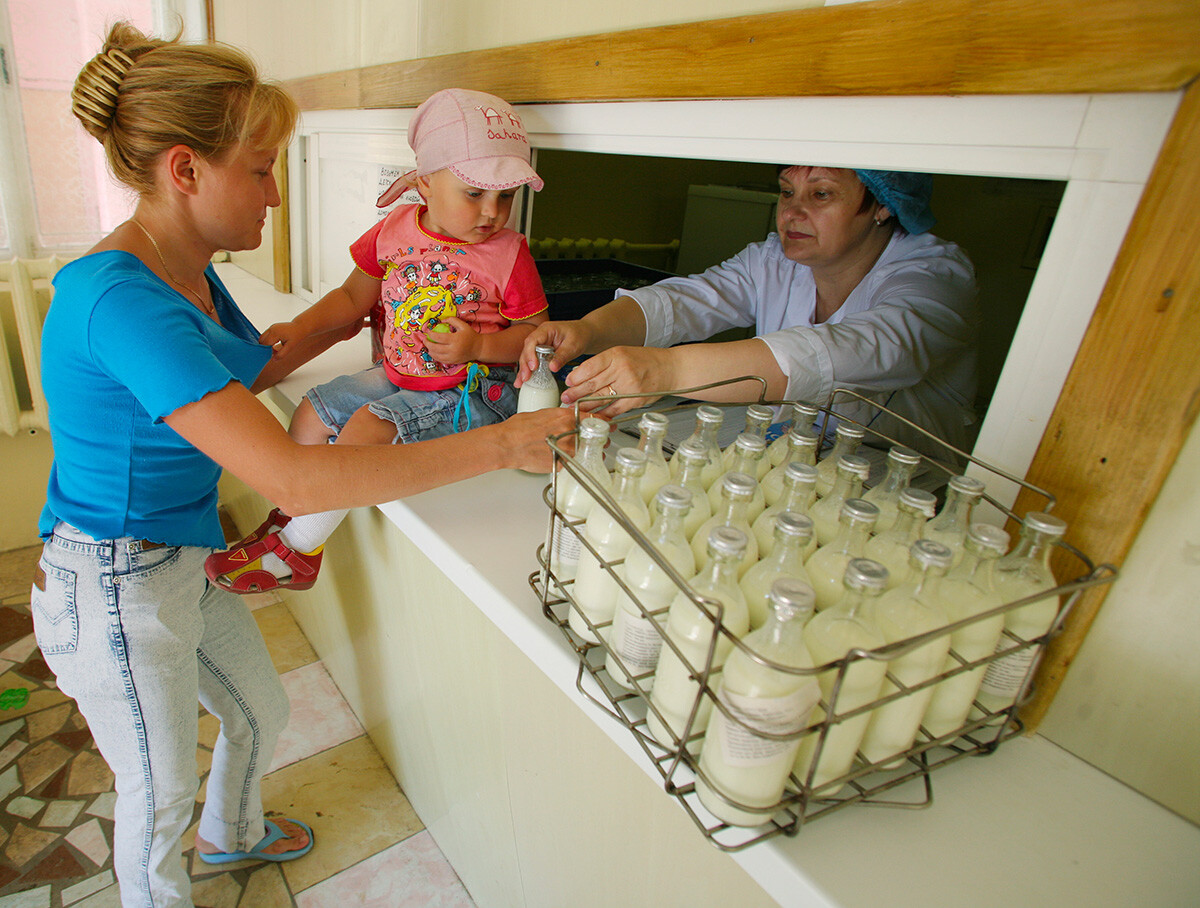
For example, more than 250 ‘milk distribution points’ operate in Moscow. Nothing is prepared there anymore; they simply hand out milk formula, fruit purees, porridge and fruit juice from various manufacturers. There are separate packages for children (up to 3 years or up to 7 years, if they are from a family with multiple children), for pregnant women and for breastfeeding mothers. For example, mothers have vitamins in their packages, babies have milk formula, children from 1 to 3 years of age – cottage cheese and kefir. To regularly get food, one simply has to obtain a doctor’s certificate once and then one can pre-order food online each month. A monthly package weighs approximately 10 kilograms.
In Bashkiria and Nizhny Novgorod, only low-income families are eligible for ‘milk kitchens’. The packages are more modest, but they also include dry baby formula, dairy products and porridge. Additionally, they also include specialized baby formula, if prescribed by a doctor. In Yekaterinburg, only babies up to 8 months of age are eligible for free dairy products; while children up to 3 years from low-income families are eligible.
Tyumen has no more ‘milk kitchens’, but low-income families can receive a one-time payment for groceries in the amount of 10,000 rubles (approx. $100).
Moscow Region no longer has ‘milk kitchens’ either, but mothers and kids can receive an allowance (maximum – 1,000 rubles [approx. $10] per month).
Samara, meanwhile, has no free food or allowances, but there are ‘milk kitchens’ where you can buy baby milk packages at average regional prices, which are also produced there. Rostov-on-Don has a similar system.
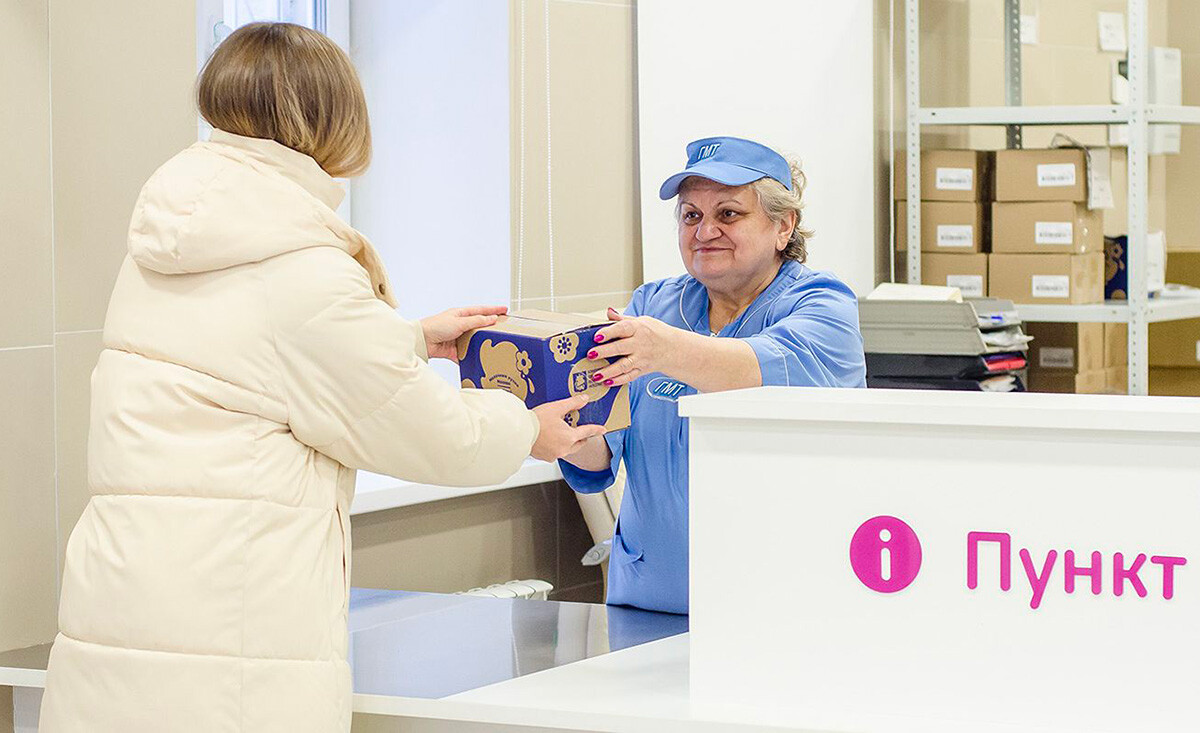
‘Milk kitchens’ are only one of the many social measures to support families with children in Russia. Keep a lookout for more about other measures in future articles.









